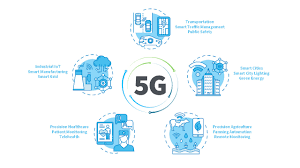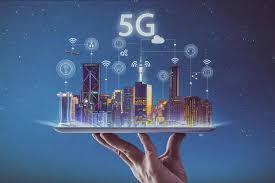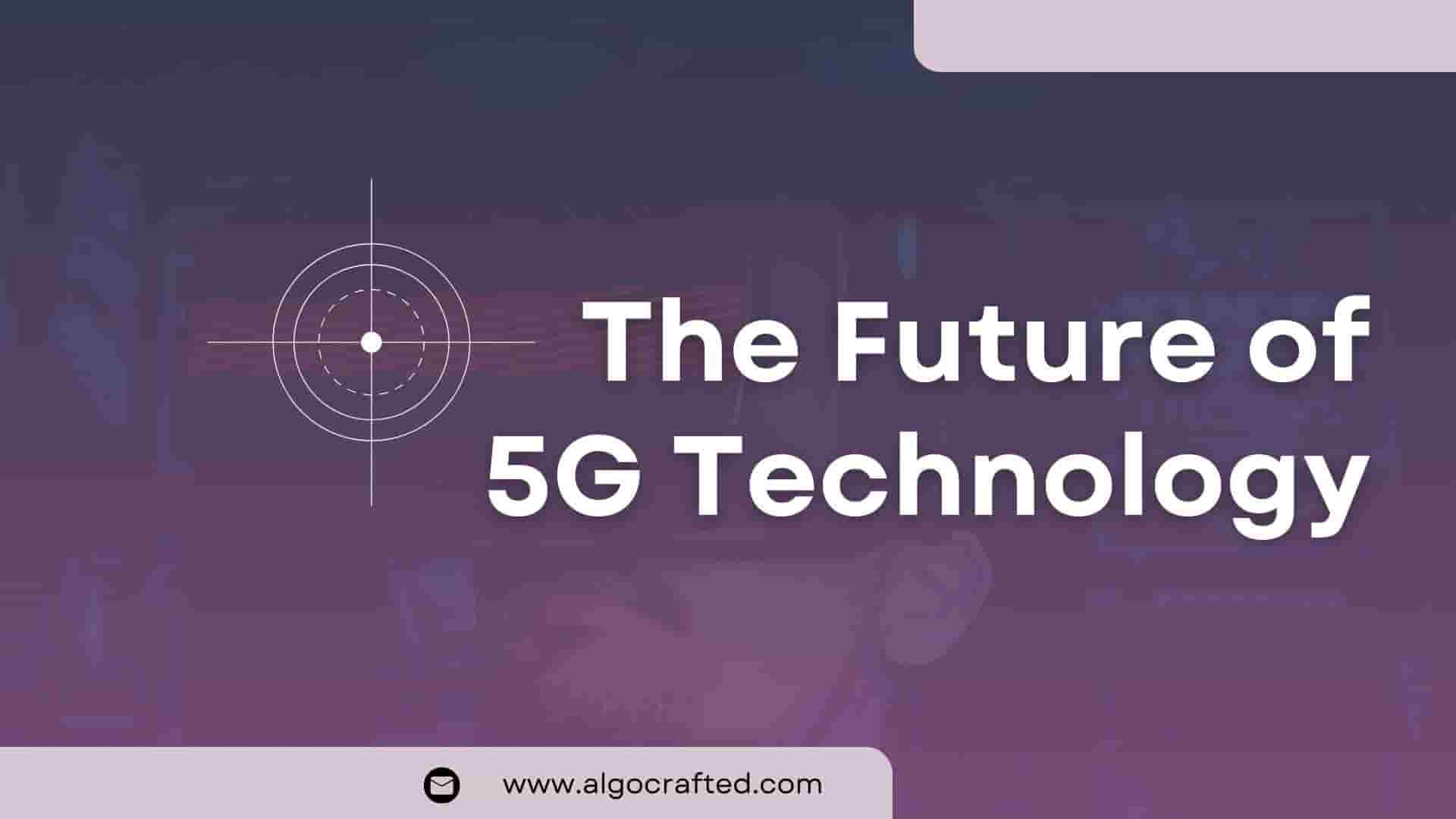Introduction: A Glimpse into the 5G Revolution
Have you ever waited an eternity for a video to buffer, cursing your Wi-Fi like it’s a personal enemy? Now, imagine a world where that frustration is extinct—where your phone downloads a 4K movie faster than you can say “popcorn.” Welcome to the future of 5G! This isn’t just a speed boost; it’s a revolution that’ll transform how we live, work, and even argue over who gets the armrest on a plane.
By 2025, Statista predicts over 2.8 billion 5G subscriptions worldwide, connecting everything from your smartwatch to your city’s traffic lights. The future of 5G promises blazing-fast internet, smarter homes, and industries reimagined. Ready to see how this tech will change your life? Buckle up, because we’re diving into the 5G universe! Explore emerging tech trends.
What Is 5G and Why Does It Matter?
Let’s start with the basics: 5G, or the fifth generation of wireless technology, is like the superhero upgrade to 4G. It’s designed to handle the data-hungry, hyper-connected world we’re barreling toward. The future of 5G isn’t just about faster TikTok scrolling (though that’s a perk); it’s about connecting billions of devices, powering smart cities, and making sci-fi dreams a reality. Why does it matter? Because 5G is the backbone of tomorrow’s tech, from self-driving cars to remote surgeries. Let’s break it down.
5G vs. 4G: The Speed Showdown
If 4G was a reliable sedan, 5G is a supersonic jet. The future of 5G brings speeds up to 100 times faster than 4G, with latency so low you’ll wonder if your phone’s psychic. Here’s a quick comparison to show why 5G is stealing the spotlight:
|
Feature |
4G |
5G |
|---|---|---|
|
Speed |
Up to 100 Mbps |
Up to 10 Gbps |
|
Latency |
20–30 ms |
1–5 ms |
|
Device Capacity |
Limited |
Massive |
|
Energy Efficiency |
Moderate |
High |
With 5G, downloading a 2-hour movie takes 3 seconds, not 3 minutes. Gamers won’t rage-quit over lag, and video calls will feel like you’re in the same room. The future of 5G is about making connectivity seamless, whether you’re streaming, gaming, or working remotely. Check our guide on internet speeds.
Core Features of 5G Technology
So, what makes 5G so special? It’s not just speed—though that’s a biggie. Here are the core features driving the future of 5G:
-
Blazing Speeds: Up to 10 Gbps, perfect for 8K streaming and massive downloads.
-
Ultra-Low Latency: 1–5 ms response times, ideal for gaming, VR, and real-time apps.
-
Massive Connectivity: Supports billions of IoT devices, from smart fridges to traffic sensors.
-
Energy Efficiency: Uses less power, extending battery life for your gadgets.
-
Network Slicing: Customizes bandwidth for specific needs, like emergency services or gaming.
For a deeper dive, check out Ericsson’s 5G insights. These features make 5G a game-changer, not just for tech nerds but for anyone with a smartphone (so, everyone).

How 5G Will Transform Daily Life
The future of 5G isn’t locked in a lab—it’s coming to your living room, commute, and classroom. Whether you’re a teen addicted to Fortnite or a grandparent mastering Zoom, 5G will make your life faster, smarter, and maybe even a little cooler. Let’s explore how.
Smarter Homes with 5G
Imagine a home so smart it practically has a PhD. The future of 5G will power the Internet of Things (IoT), letting your appliances chat like they’re at a coffee shop. Your fridge could order milk when you’re running low, your thermostat could adjust based on your commute, and your lights could dim for movie night—all in real-time, thanks to 5G’s low latency. Here’s what’s in store:
-
Smart Appliances: Your oven might preheat when you leave work, and your washer could text you when the laundry’s done.
-
Enhanced Security: 5G-powered cameras offer real-time alerts, catching porch pirates before they strike.
-
Energy Savings: Devices optimize power usage, slashing your bills and saving the planet.
The result? A home that’s efficient, secure, and maybe a tad smug about its tech savvy. Discover IoT home solutions.
Revolutionizing Entertainment
Gamers, streamers, and binge-watchers, this one’s for you. The future of 5G will turn entertainment into a thrill ride. With speeds up to 10 Gbps, you can stream 8K movies without a hiccup or dive into VR worlds that feel real. Cloud gaming will let you play AAA titles on your phone, no console required. And forget buffering—5G makes it as extinct as dial-up.
Picture this: You’re at a virtual concert, rocking out with thousands of fans in AR, all from your couch. Or maybe you’re battling aliens in a lag-free multiplayer game, thanks to 5G’s 1 ms latency. Netflix and chill? More like Netflix and thrill. The future of 5G will make entertainment immersive, instant, and downright addictive.
Read more: 5G vs Wi-Fi 6: Which Is Better for Home Internet?
Education and Remote Learning
Students, teachers, and lifelong learners, get ready: 5G is about to make education mind-blowingly awesome. The future of 5G will power virtual classrooms with real-time interaction, so remote learning feels like the real thing. Imagine holographic teachers explaining physics or VR field trips to ancient Rome—5G’s bandwidth makes it possible.
For underserved communities, 5G could bridge the digital divide, bringing high-speed internet to rural schools. Interactive apps will let students collaborate across continents, and low latency will ensure smooth video lectures. The future of 5G means no more “Can you hear me now?” moments in class. Read about edtech innovations.
5G’s Impact on Industries
The future of 5G isn’t just personal—it’s industrial. From hospitals to highways, 5G will reshape how entire sectors operate. Let’s dive into the big three: healthcare, transportation, and smart cities.
Healthcare: A New Frontier
The future of 5G could save lives. With ultra-low latency, doctors can perform remote surgeries using robotic arms, operating on patients thousands of miles away. Wearable devices will monitor your heart rate, blood sugar, or sleep patterns in real-time, alerting doctors to issues before you even feel sick. Telemedicine will become as routine as a Zoom call, with crystal-clear video and instant data sharing.
Hospitals will use 5G to connect IoT devices, like smart beds that adjust for patient comfort or sensors that track equipment. During emergencies, 5G’s network slicing can prioritize bandwidth for first responders, ensuring they stay connected. The future of 5G in healthcare is about precision, speed, and accessibility—making medicine smarter and more human.
Transportation and Autonomous Cars
Buckle up, because the future of 5G is taking the wheel—literally. Self-driving cars rely on 5G to communicate with each other, traffic lights, and road sensors in real-time. With 1 ms latency, vehicles can react to obstacles faster than a human driver, making roads safer and traffic smoother.
Passengers will love 5G, too. In-car entertainment will include 4K streaming, AR navigation, and virtual meetings on the go. Imagine watching a movie in your Tesla while it navigates rush hour—5G makes it possible. Public transit will also get a boost, with 5G-powered buses optimizing routes based on real-time data. The future of 5G in transportation is fast, safe, and ridiculously cool.
Smart Cities and Urban Planning
Ever wished your city could think for itself? The future of 5G will make that happen. Smart cities will use 5G to connect sensors, cameras, and devices, creating urban hubs that are efficient and sustainable. Traffic lights will adjust to real-time flow, reducing gridlock. Waste bins will signal when they’re full, streamlining collection. Even streetlights will dim when no one’s around, saving energy.
Urban planners will use 5G data to tackle pollution, congestion, and housing. For example, sensors could monitor air quality and trigger alerts during smog spikes. The future of 5G will make cities more livable, turning dystopian sprawls into connected utopias. For more, check McKinsey’s 5G report.
Challenges in the Future of 5G
The future of 5G sounds like a tech utopia, but it’s not all smooth sailing. From towering costs to hacker threats, let’s talk about the hurdles we need to clear.
Read more: The Future of 5G | IBM
Infrastructure Hurdles
5G isn’t like 4G, which could rely on a few giant towers. The future of 5G needs a dense network of small cells—think mini towers on every street corner. That’s expensive, time-consuming, and a logistical nightmare. Urban areas might get 5G first, leaving rural communities in the dust. Governments and telecoms need to invest billions to make 5G universal, and that’s a tough sell when budgets are tight.
Then there’s the red tape. Permits, regulations, and community pushback (nobody wants a 5G tower in their backyard) can slow deployment. The future of 5G depends on solving these infrastructure puzzles to ensure everyone gets a slice of the connectivity pie.
Security and Privacy Concerns
With great connectivity comes great responsibility. The future of 5G will connect billions of devices, creating a hacker’s playground. A single breach could expose your smart home, car, or even medical data. Cybersecurity experts warn that 5G’s complex network could have more entry points for attacks than 4G.
Privacy is another worry. 5G’s data collection—think smart city sensors or IoT devices—could track your every move if not properly regulated. Encryption, secure protocols, and strict laws will be critical to keep 5G safe. The future of 5G must balance innovation with trust. Learn about cybersecurity trends.

The Global Race for 5G Dominance
The future of 5G isn’t just a tech race—it’s a global showdown. Countries like the U.S., China, and South Korea are pouring billions into 5G infrastructure, aiming for economic and technological supremacy. By 2025, Statista predicts Asia-Pacific will lead with 1.4 billion 5G connections, driven by China’s aggressive rollout. The U.S. is banking on private telecoms like Verizon, while Europe focuses on regulation and sustainability.
This race isn’t just about bragging rights. 5G leadership means job creation, innovation, and geopolitical clout. But it’s not all rosy—trade tensions and supply chain issues (like chip shortages) could slow progress. The future of 5G will shape the global economy, and everyone’s watching. For more, visit GSMA’s 5G stats.
Conclusion: Embracing the 5G Future
The future of 5G is a wild, exhilarating ride. From smarter homes and lag-free gaming to lifesaving healthcare and sustainable cities, 5G will touch every corner of our lives. It’s not just faster internet—it’s a new way of living, working, and dreaming. But challenges like infrastructure costs and security risks remind us to proceed with care. As we stand on the brink of this connected era, let’s stay informed, ask questions, and shape the 5G future together. What do you think 5G will bring to your life? Leave your thoughts in the comments!
Read more: 5 Predictions About 5G Adoption in 2025 and Beyond
FAQs About the Future of 5G
1. How will 5G change everyday life?
The future of 5G will bring faster internet, smarter homes, and immersive entertainment. From real-time health monitoring to lag-free gaming, 5G will make daily tasks more efficient and connected for all ages.
2. Is 5G safe for health?
According to the WHO, 5G’s non-ionizing radiation shows no consistent health risks. Regulatory bodies ensure 5G meets safety standards, addressing concerns about exposure.
3. What industries will 5G impact most?
Healthcare, transportation, and smart cities will see major 5G-driven changes. Expect remote surgeries, autonomous cars, and efficient urban systems powered by 5G’s speed and connectivity.
4. Why is 5G faster than 4G?
5G uses higher-frequency bands and tech like beamforming, delivering speeds up to 10 Gbps and latency as low as 1 ms, far surpassing 4G’s capabilities.
5. What are 5G’s biggest challenges?
Infrastructure costs, rural access, and cybersecurity are key hurdle. Building dense networks and securing data will be critical for the future of 5G’s success.


1 thought on “The Future of 5G: How It Changes Our Lives Best of 2025”